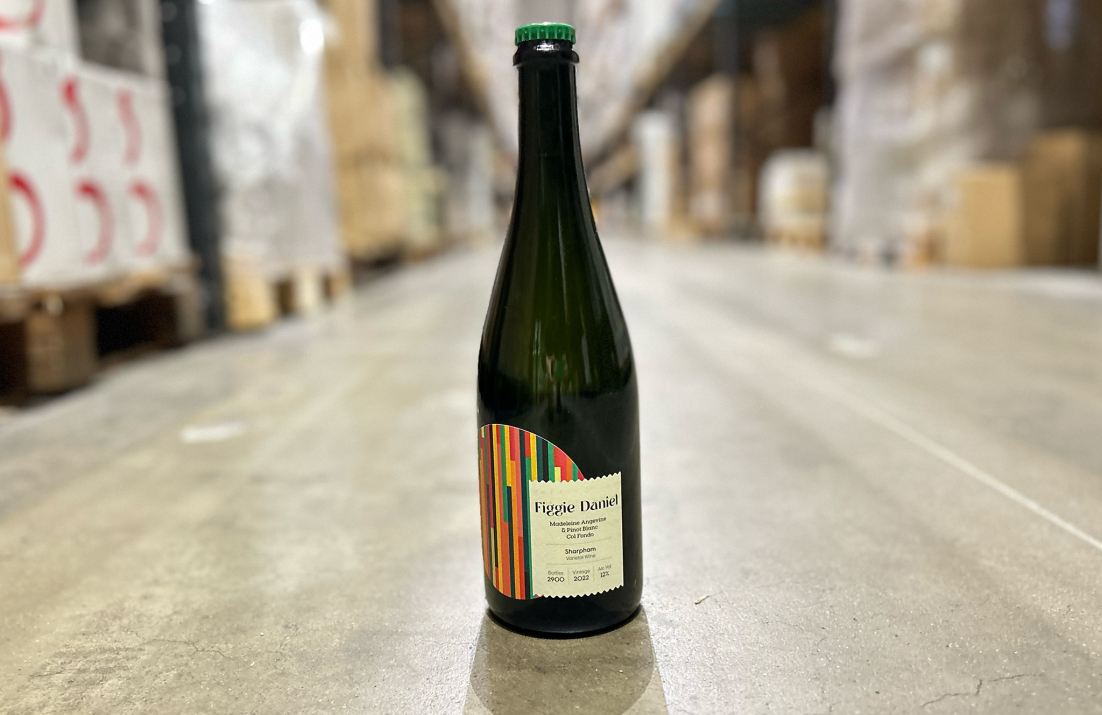How Sparkling Wine is Made

This month we have bought in some lovely wines from our new producer Sandridge Barton. They produce a range of wines from still whites and reds to classic English Sparkling, but also some alternative styles, such as their orange wine and a Col Fondo.
We are all somewhat familiar with English Sparkling but what is Col Fondo? We thought we would take the opportunity to explain all the different types of Sparkling Wine and how they differ.
Starting with the basics: How do you make Sparkling Wine?
Well, fermentation is the process whereby, in the right conditions, yeast consumes sugar and creates Alcohol and Carbon Dioxide (CO2). The CO2 normally escapes during this fermentation, and so to create a wine with fizz you need to seal the container to capture the CO2, thus creating the bubbles. This is the simple method behind how to get the bubbles in the wine, but winemakers have different options within this process to create different styles.
The Traditional method is the most famous because this is used to make Champagne, Crémant, Cava from Spain, Cap Classique from South Africa and English Sparkling, to name a few. These wines are similar in having some autolytic flavours - which relates to the yeast contact during this method - giving the classic biscuit and brioche notes.
If you were to take away 5 key details for this style of Sparkling Wine, it would be:
1. The first fermentation makes the wine, Liqueur de Tirage is added to start a second fermentation which takes place in the final bottle to create the bubbles.
2. Time in contact with yeast creates the autolytic flavours of brioche and biscuit, so depending on length of time results in level of intensity of these yeasty flavours.
3. Bottles are slowly tipped and twisted (a process called ‘riddling’) which allows yeast to be collected at the neck of the bottle which can then be frozen so that it pops out when the cap is removed, due to the release of pressure which is a process called ‘disgorgement’.
4. The bottle is then topped up with Liqueur d’Expedition which provides the sugar to determine the sweetness.
5. Famous varieties used are Pinot Noir, Chardonnay and Meunier. With the exception of Champagne, other Sparkling Wines can be made using different varieties.
More Sparkling Wine making techniques
Another method is Tank, also known as Charmat, which is used for the well-known Prosecco and German Sekt. This method uses a second fermentation in a steel tank, and it's more common not to have as much contact with the yeast, so the flavours are more fruit focused.
Asti is made in a similar way to the Tank (Charmat) method, but tends to go through one fermentation, so the CO2 escapes for part of the fermentation before being trapped to create the bubbles in the wine. This creates a sweeter style with lower alcohol. It is usually made with Muscat and so has classic grapey and elderflower flavours.
A lesser-known style that is slowly growing in popularity is the more natural Ancestral Method, used for wines known as Petillant Naturel or Pet Nat. The wine is bottled after being partly fermented so that it finishes its fermentation in the bottle to trap the CO2 for a sparkling wine. Most of the time the wine is not disgorged so it keeps some sediment for a richer autolytic style giving a hazy appearance. The wine can be unpredictable because the wine is allowed to continue its fermentation in bottle, which has been part of the attraction of a more natural, funky style.
Now we return to Col Fondo, which translates to ‘with the bottom’ (referring to the sediment) and is similar to Pet Nat, except the must is fully fermented before bottling. The style is lightly-cloudy due to some remaining sediment, and it is bone dry with more sour notes than Prosecco and has a lighter fizz.
A simple way of creating a sparkling wine is to inject the Carbon dioxide into the wine under pressure, it is usually at a lower pressure but is well suited to aromatic varieties.
